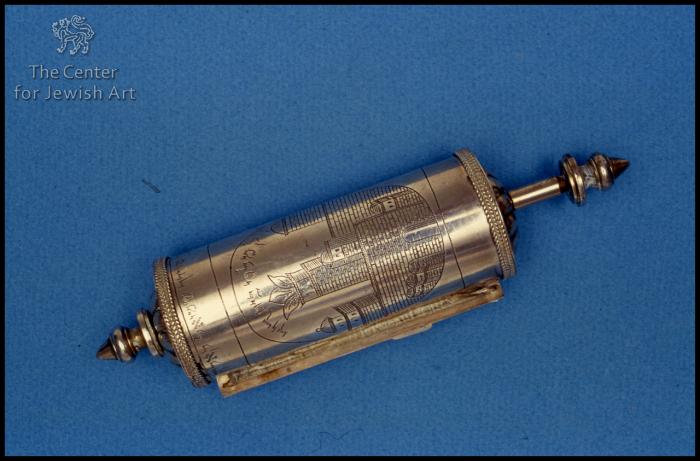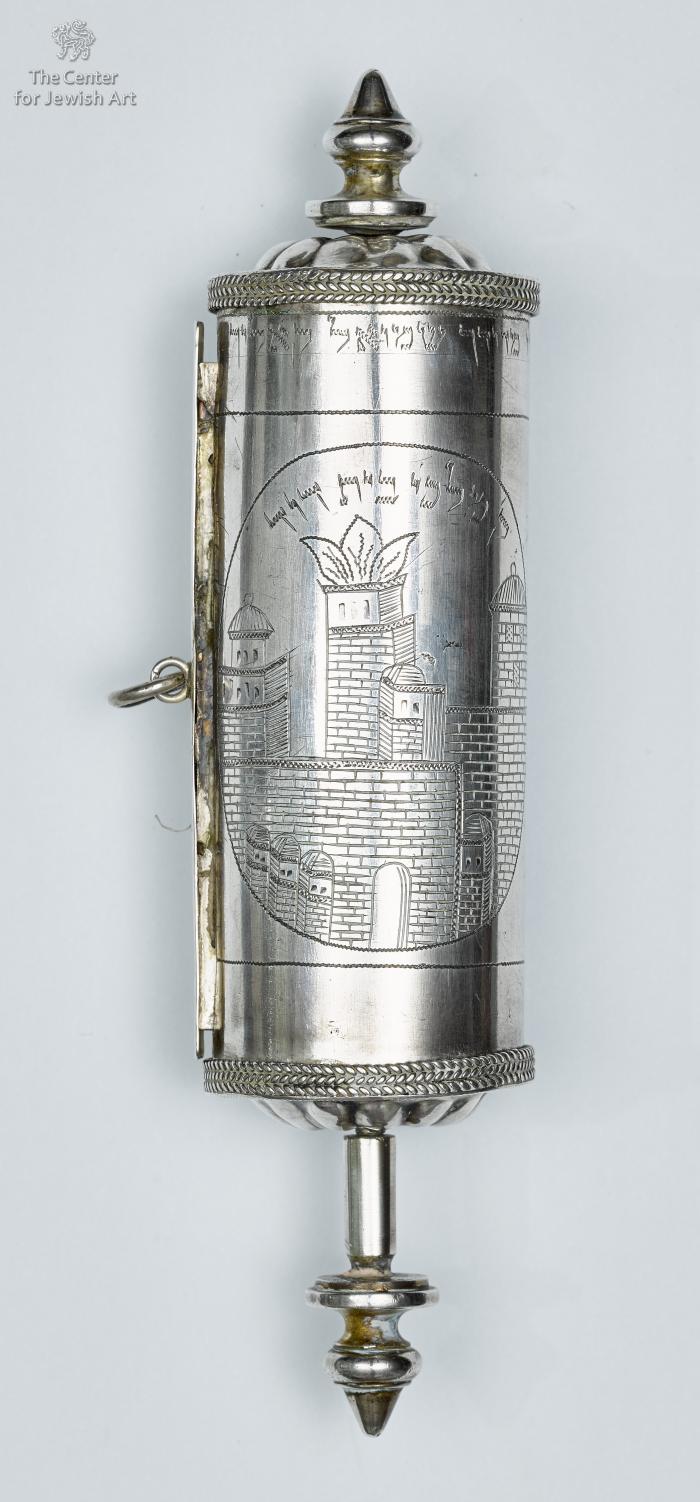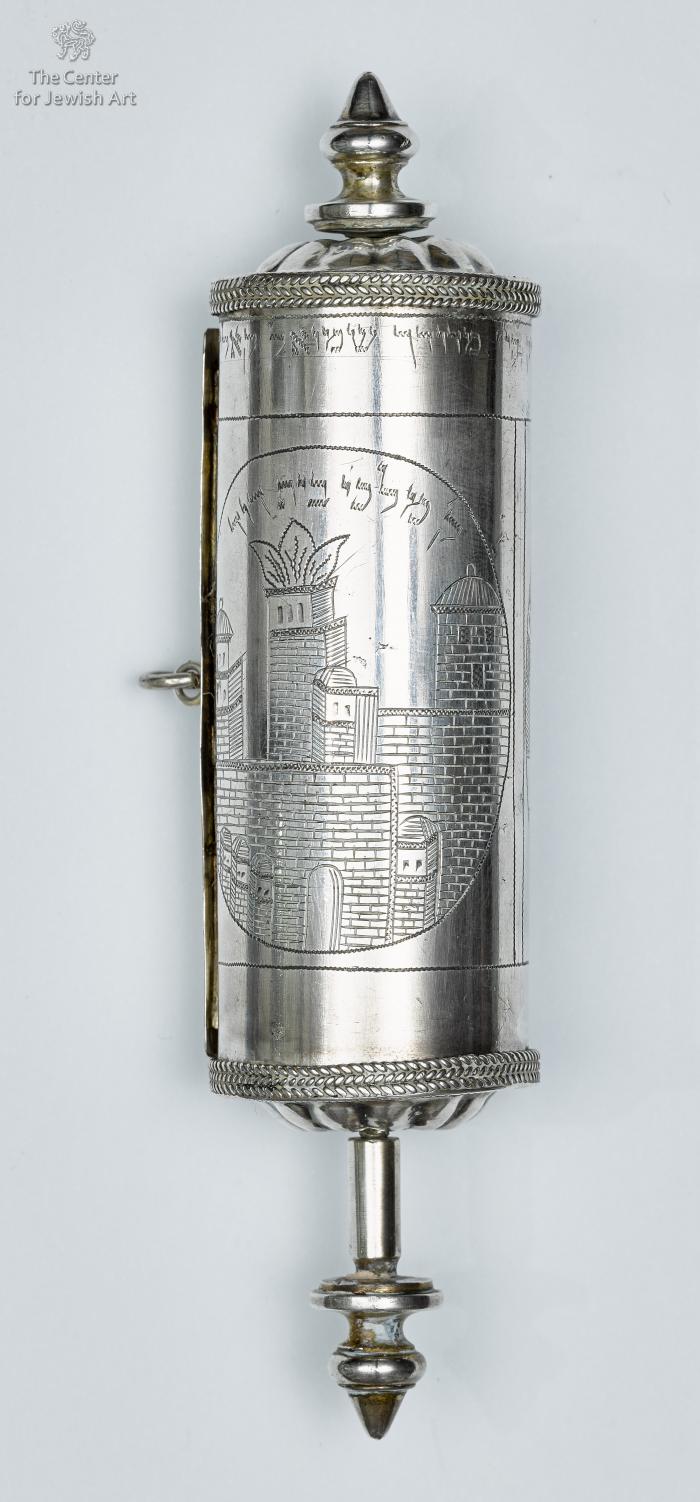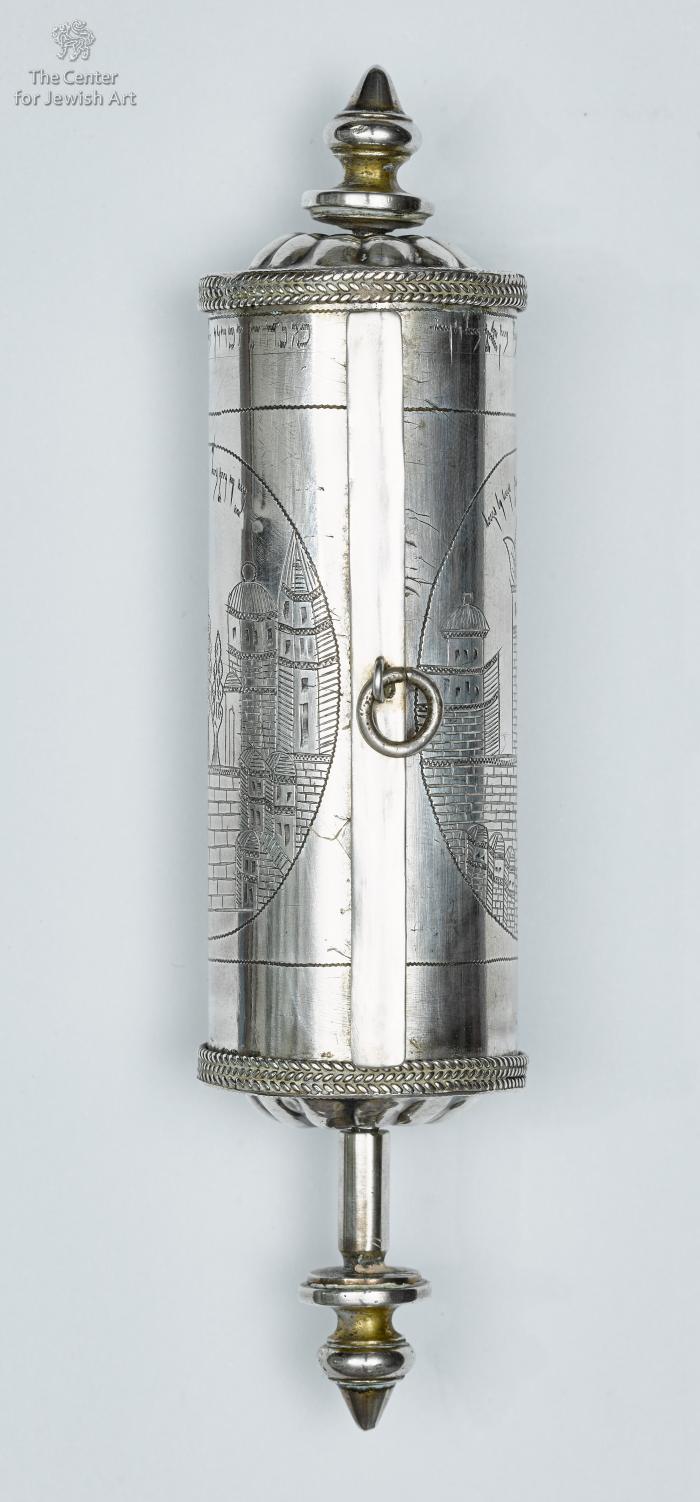Obj. ID: 11607 Esther scroll case, Safed, c. 1920

sub-set tree:
The following description was prepared by William Gross:
The Scroll of Esther tells the story of the salvation of the Jews of the Persian Empire. Since the Talmudic period it has been customary to write the Book of Esther on parchment in the form of a scroll, and the rules governing its production and writing are basically the same as those for a traditional Torah scroll. It is not known when and under what circumstances artistic embellishment of Esther scrolls began. The earliest extant illuminated Esther scrolls emanate from 16th-century Italy, commissioned by well-to-do Italian Jews. Cylindrical or polygonal cases were often made to house such scrolls, often provided with a crank handle to roll the parchment through a vertical slot. Cases were made of copper, tin, and wood, but fine silver and some ivory cases have survived as well. Such containers for the scroll were mostly produced in Italy, Austria and the Ottoman Empire.
This Esther Scroll case has much in common with the famous Safed Kiddush cups and shares with them some typical engraved scenes of the Holy Land. In this case the scenes are of the western wall - the Kotel - and the Tower of David. This imagery is highly unusual on a silver case for the Esther Scroll. The scroll and case were a gift and are inscribed with a Hebrew dedication inscription.










